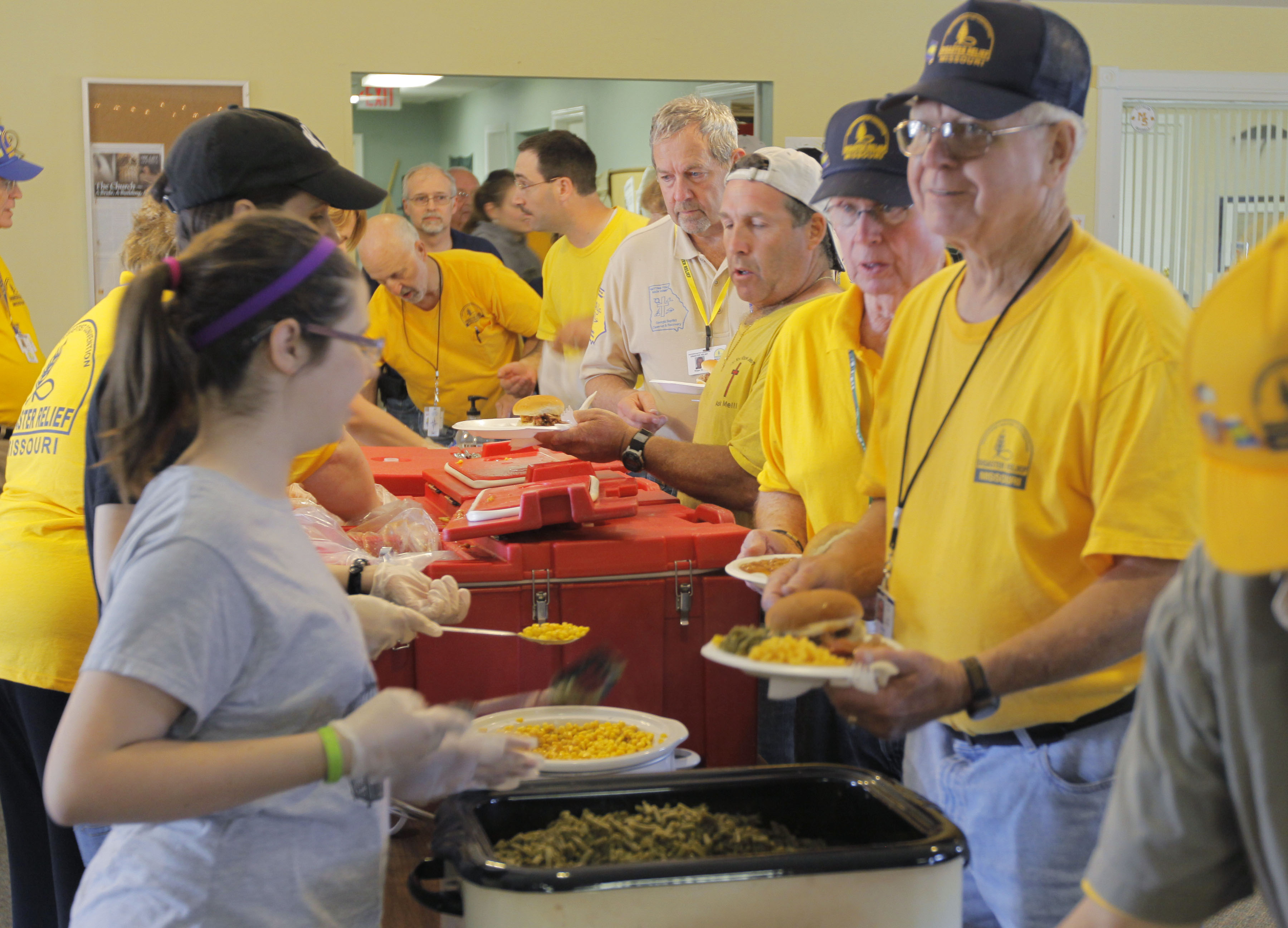Submitted by Jono Anzalone
During the disasters, while local and state officials concentrate on emergency protective measures and life safety, they are often challenged with the amount of downed trees and other debris blocking roads and their communities’ paths to recovery. Power may be out and people needing to eat. Hundreds of volunteers from faith-based groups, community organizations and private companies may quickly show up to help. Volunteers play a key role in any disaster. Without volunteer labor, equipment or material contributions, many communities would have a much harder time responding and recovering from disasters.
Time and time again, Southern Baptist Disaster Recovery Team volunteers fire up their chainsaws to clear debris from roads, school grounds, parks and other areas. Workers from Presbytery, the National Presbytery Disaster Assistance Response Team, Assemblies of God and members of other faith based organizations jump in to help. The American Red Cross (ARC) turns out with many volunteers working alongside local voluntary organizations, as well as providing shelters and feeding stations. Firefighters cook meals and the University of Extension offers support to the community. Those who cannot provide physical labor give moral support. Neighbors helping neighbors.
The good news is that some of this volunteer labor and other donated resources may be eligible under FEMA’s Public Assistance Program requirements, when a Presidential Declaration is made, and could help local governments and other state agencies keep more money in their budgets to face future emergencies thanks to the FEMA Donated Resources Policy (RP9525.2). Though credit for donated resources is limited to emergency work such as emergency protective measures and debris removal, it is still good news for many local municipalities and agencies. So many volunteers turn out to help, and the time and other resources they donated will help ease the financial burden on many communities.
Examples of donated resources that may be eligible include volunteer labor for debris removal, sandbagging, or search and rescue operations, mass care activites, as well as donated equipment such as chainsaws, or donated materials such as gloves.
When it comes to donated resources, documentation is key! For volunteer work, local public officials must show hours worked, work site and a description of work for each volunteer. FEMA requires the same data for donated equipment and materials. For more information, check out FEMA’s Donated Resources Page.
The May 2011 Joplin tornado showed the incredible value the FEMA Policy offers communities, best stated by – Leslie Jones, City of Joplin, Finance Director:
“The $17.7 million of donated resources is the largest amount recorded in the history of Missouri and in FEMA Region VII. There were over 102,000 volunteers working over 610,000 hours along with donated goods and services valued at over $8.5 million, and 12,000 hours of donated equipment use. That’s incredible and the City is very thankful for all who have helped Joplin. Not only did the volunteers help clean up Joplin, but they also helped us financially recover a significant amount of expense.”
In addition to the amazing work performed by voluntary agencies, this force multiplier can save communities valuable tax base in order to kick-start their recovery.

